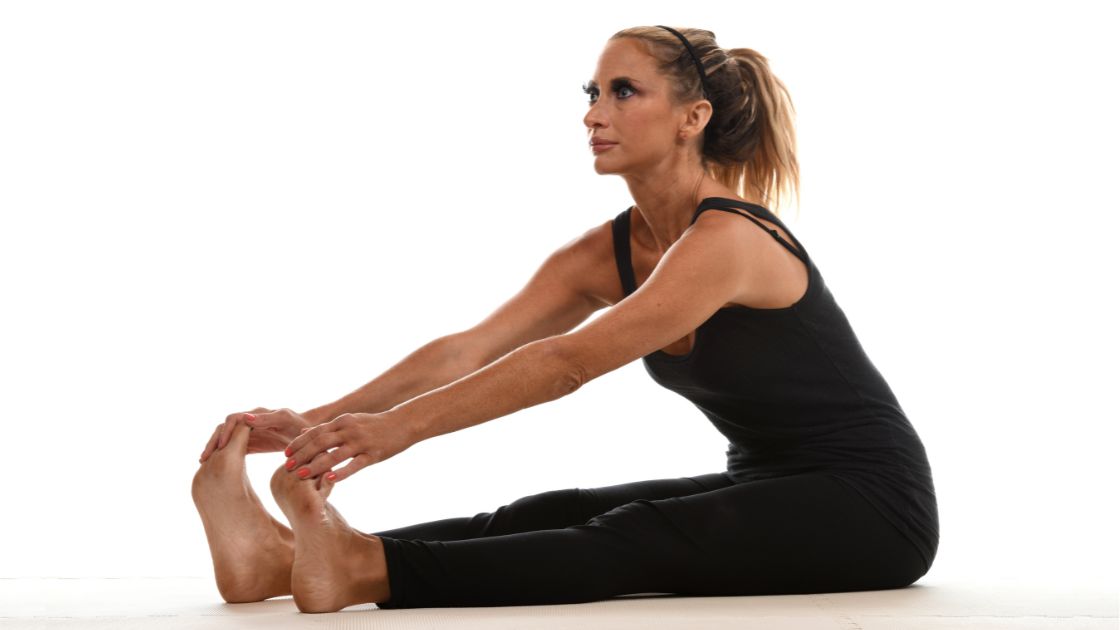Know Your Limits, Don’t Overstretch!

This idea isn’t exactly true for all people with tight muscles, and it’s been addressed in a previous blog regarding the best time to stretch. If you take a look at that blog, you’ll find that the best time to stretch is after your muscular adhesions have been loosened up. However, even after having your knots worked out, you still have to recognize your body’s limitations and not overstretch.
Overstretching your muscles is counterproductive and puts you at risk for further injury. Muscle aches and pain are the most common result of overstretching, but extreme cases can be accompanied by swelling, bruising, and spasming. Continuing to overwork a pulled muscle can even cause debilitating muscular tears.
What are the signs you’re reaching your limit? How can you prepare your body before you stretch to decrease the chances of overdoing it?
Signs of Overstretching
Sharp Pain
A good stretch involves control over your muscles’ flexibility and your joints’ mobility. A telltale sign that you’re taking your flexibility and joint range of motion past their capacity is a sharp or stabbing pain in the targeted muscle group or tendons. It’s normal and beneficial to feel mild discomfort when stretching. If you experience actual pain though, take a step back.
Holding Your Breath
Are you holding your breath while stretching? If so, you’ve gone too far! When you hold your breath during a stretch, your muscles are being deprived of the oxygenated blood they need for optimal functioning. So if a stretch is feeling so uncomfortable that you can’t exhale, it’s time to stop and start over.
Twitching
If you can’t take a muscle group through a controlled fluid motion, instead finding your body twitching or jerking through the stride, you’re pushing yourself too hard. Resistant muscles can’t relax, and forcing them to do something they shouldn’t will only tighten them further.
Preparing the Body for Stretching
Many of the steps you can take to prepare your body can be performed on your own at home, but some are better executed with assistance of a bodyworker or personal trainer.
- Remove Knots from Muscular Tissue
- Deep tissue massage and myofascial release are effective ways to remove muscular adhesions.
- Lengthen Contracted Muscles
- Active release therapy and pin-and-stretch techniques can be used to lengthen short tight muscles.
- Strengthen Weak Muscles
- Ask a personal trainer or bodyworker which stretches are best for the targeted muscle group, and practice the exercises after knot removal and muscle lengthening.
- Assisted stretching can be carried out by a personal trainer, massage therapist, chiropractor, or physical therapist.
- Mobilize Joints
- Joint range of motion exercises can be practiced at home or with the help of a professional.
- Hydrate
- Adequate hydration is crucial to proper joint and muscular functioning. Dehydrated muscles can’t expand and contract optimally.
- Warm up
- Muscles are more pliable when they’re warm. Do a short burst of exercise before stretching to get the blood flowing.
- Heat therapy before stretching is also helpful. You can either apply a heat pack to a specific muscle group at home, or ask your massage therapist to incorporate heat therapy into the bodywork session.
Now You Know!
Your typical overstretch-related strains can heal in a couple days with a combination of bodywork and at-home self-care. However, a chronically overstretched muscle can tear and take weeks or months to heal. Prevent injury by recognizing the signs of overstretching, and take the steps to get your body stretch-ready!
Schedule a massage with one of our talented therapists today!

Katrina Jenkins
Author, Licensed Massage Therapist
Katrina Jenkins graduated from Towson University in 2013 with a Bachelor’s Degree in Health Science and worked as a nurse’s aide briefly before pursuing her true passion. She graduated from the Massage Therapy Institute of Colorado in April 2016 with honors and completed the Touch of Healers Scholarship Program the following summer. She has been a part of the Moyer Total Wellness Team since the summer of 2017.
Resources
Furey, Meghan. “Overstretching: Injuries, Treatment & Prevention.” Healthline, 19 May 2020, www.healthline.com/health/overstretching.
Judge, Lawrence W., et al. “Hydration to Maximize Performance and Recovery: Knowledge, Attitudes, and Behaviors among Collegiate Track and Field Throwers.” Journal of Human Kinetics, vol. 79, no. 1, 10 July 2021, pp. 111–122, www.ncbi.nlm.nih.gov/pmc/articles/PMC8336541/, https://doi.org/10.2478/hukin-2021-0065.
Mayo Clinic. “Muscle Strains – Symptoms and Causes.” Mayo Clinic, 2018, www.mayoclinic.org/diseases-conditions/muscle-strains/symptoms-causes/syc-20450507.
WebMD Editorial Contributors. “Muscle Strain.” WebMD, WebMD, 7 June 2020, www.webmd.com/fitness-exercise/guide/muscle-strain.
Photo Credit
Canva by Gerville
